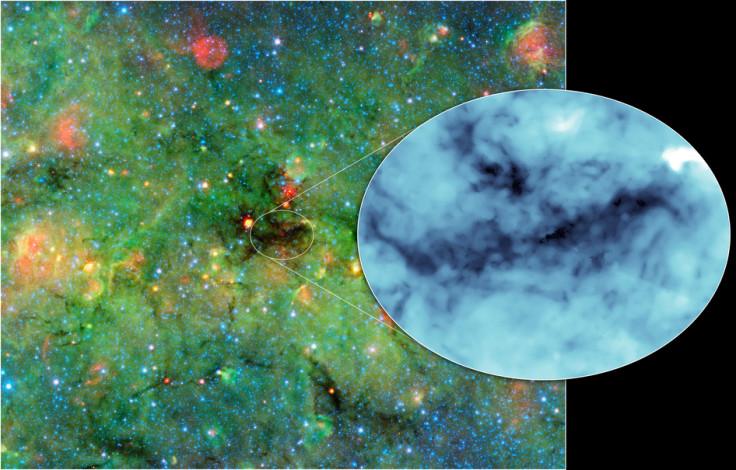Nasa Has Photographed Darkest Shadows in Galaxy, Showing How Stars Are Formed

US space agency Nasa and the University of Zurich have released a photograph of the galaxy that shows cosmic clumps that are so dark, dense and dusty that they throw the deepest shadows ever recorded outside the event horizon of a black hole.
Using the infrared camera on Nasa's Spitzer Space Telescope to view the galaxy, the astronomers discovered the cosmic clumps hiding within a huge cloud of gas and dust.
They believe that the dense shadows will help them to understand how O-type stars, which have baffled scientists for years, are formed.
"The dusty cloud, the results suggest, will likely evolve into one of the most massive young clusters of stars in our galaxy," said Nasa.
The densest cosmic clumps in the cluster will blossom into O-type stars, great hulking stars that make a major impact on their local stellar environments, while also helping to create the heavy elements needed for life.
The blown-up image shows the overall darkness of the cloud, while the background image combines data from Spitzer surveys.
Blue represents 3.6-micron light and green shows light of 8 microns, both captured by Spitzer's infrared array camera, while red is 24-micron light detected by Spitzer's multiband imaging photometer.
The red spot in the centre of the zoom oval, unrelated to the new study's findings, is a young star whose radiating heat has lit up a surrounding cocoon of dust.
© Copyright IBTimes 2025. All rights reserved.






















